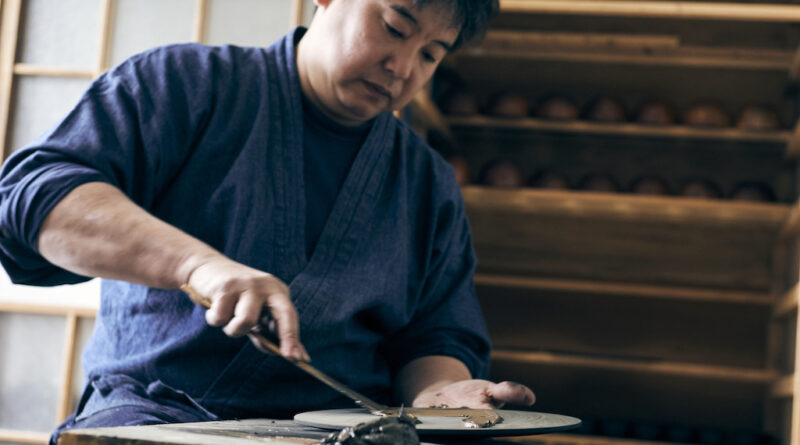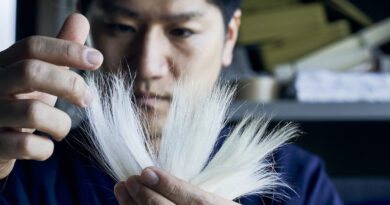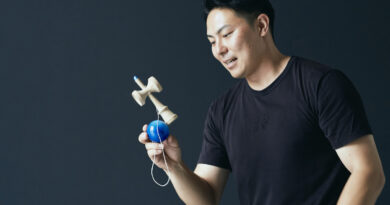Naoya Takayama and the everyday luxury of Japanese lacquer
Naoya Takayama, 4th generation head of a company that has been selling Buddhist altars for over 100 years, has been receiving great plaudits after turning his talents to creating some of Japan’s most beautiful lacquerware.
It’s been a busy 2023 for Naoya Takayama. Ever since it was announced that his beautiful lacquerware bowls were gifted to the world leaders and their spouses that attended the Hiroshima G7 Summit back in May, he has been inundated with orders.
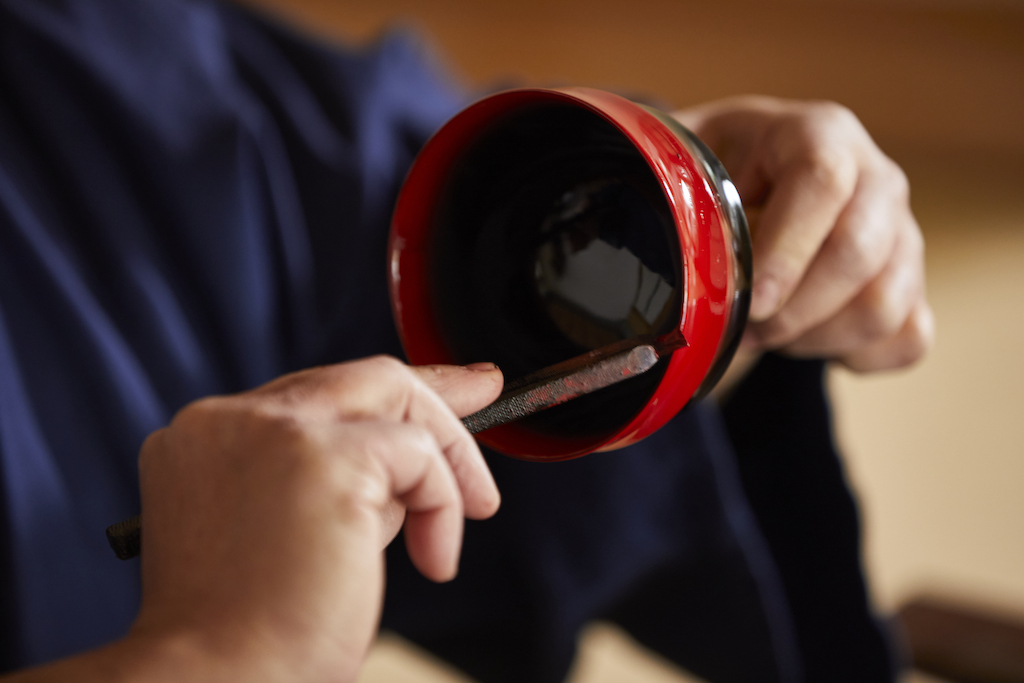
Takayama created the hand lacquered vermillion and jet black “Akebono” bowls at the request of the Japanese Prime Minister’s wife. Holding one of the bowls, I marvel at the blending of the two colors. The delicate gradation perfectly conjures up the image of the sun rising at dawn by which Takayama says he was inspired.
Hiroshima Butsudan
We are sitting on a sofa in Naoya Takayama’s gallery on the 2nd floor of his family’s business, Takayama Kiyoshi. Named after his great-grandfather who started the company in 1913, Takayama Kiyoshi is a supplier of butsudan, Buddhist altars, and one of several such stores on what is known as Butsudan Street. On the edge of the city’s nightlife district, it is an incongruous mix of the sacred and the profane. Storefronts displaying Buddhist paraphernalia are overlooked by neon signs, extinguished on this weekday morning, with names like VIP Room and Glow Bar.
While the bars are a modern development, Butsudan manufacture in Hiroshima has a history almost as long as that of the city itself. Craftsmen that accompanied Nagaakira Asano to Hiroshima when he was installed as ruler of the region in 1619, are said to have laid the foundation of the craft. There are seven steps in producing butsudan, each of which is overseen by expert craftsmen who focus on their own speciality. Thus, butsudan are sometimes described as the embodiment of traditional craftsmanship in Japan.
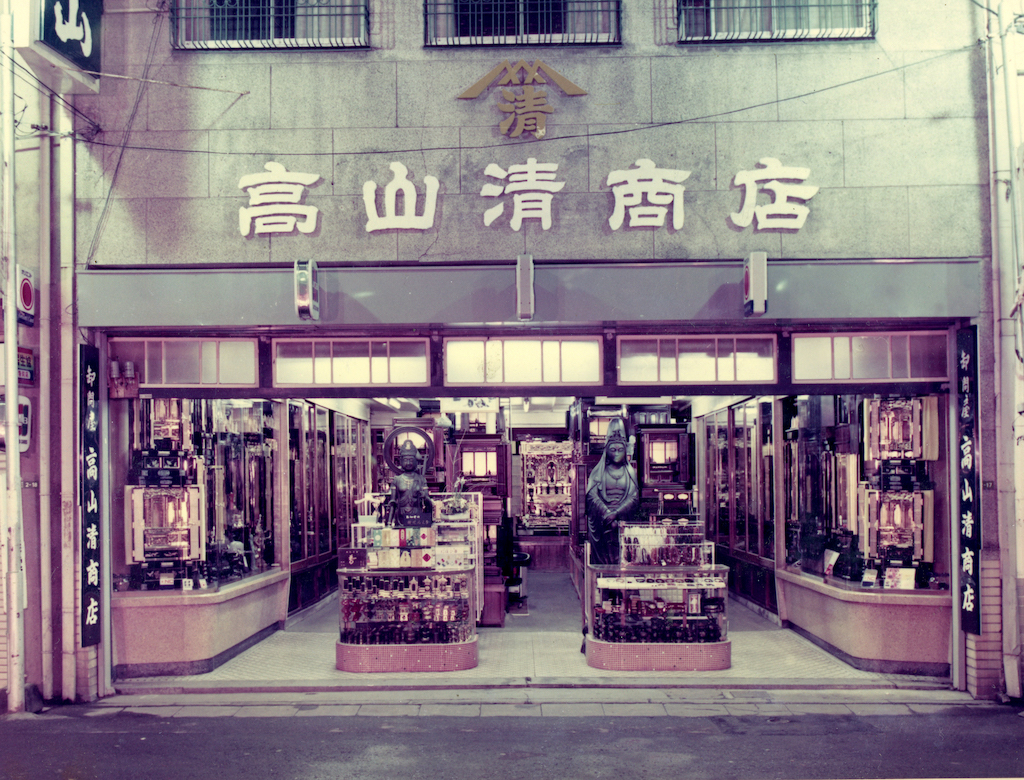
After the end of feudalism at the end of the 19th century, butsudan began to be sold to Osaka wholesalers and the trade started to boom. In the early years of the 20th century, apprentices honed their skills in different parts of the city depending on whether they were working on carving, metal fittings, gold leaf work or painting with lacquer etc. Takayama Kiyoshi, who specialized in the application and polishing of lacquer, was one of several companies that set out to continue the history of butsudan manufacturer after the industry and the city as a whole was wiped out by the A-bomb in 1945.
The path to destiny
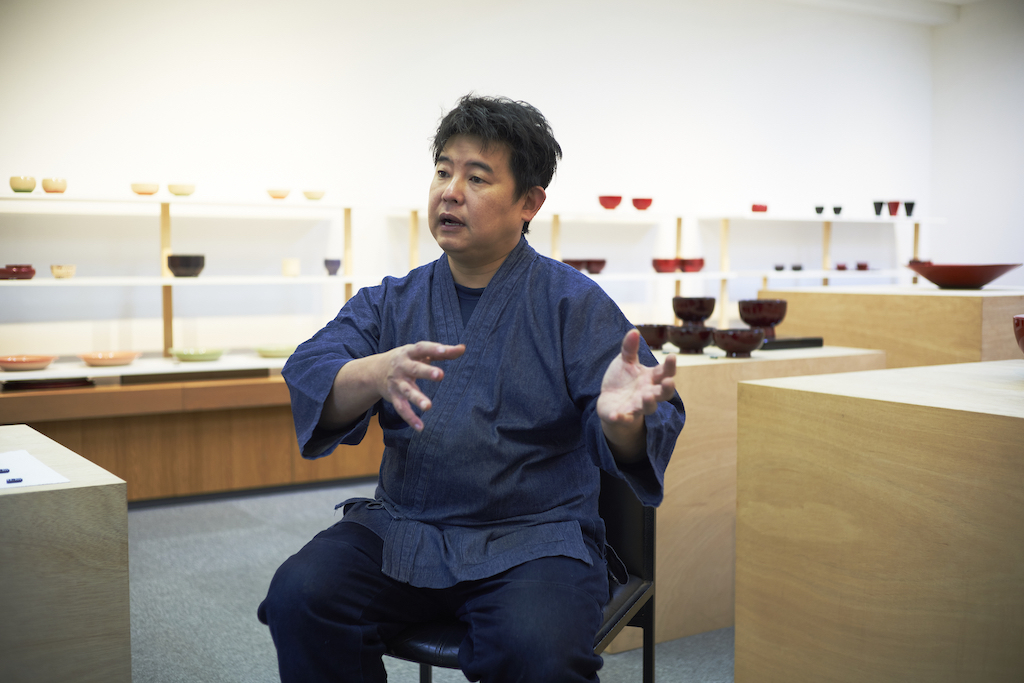
Naoya Takayama says that, although he spent a lot of time when he was out of school helping out his grandfather on jobs doing repair and restoration at temples,he never felt that it was a given that he would follow in the footsteps of his forefathers. In fact, he confesses that the only reason he enrolled in a traditional crafts college in Kyoto was that he was at a loss for what to do after graduating from university.
He ended up dropping out of the college and entered an apprenticeship with a Kyoto butsudan maker. Even today, apprenticeships under Japan’s shokunin (as master craftspeople are known), tend to be unforgiving and require a good deal of physical and mental fortitude. While many of Takayama’s cohorts quit along the way, having grown up in a similar environment, he says he felt quite at home. With no vacancies in lacquer painting, he began by practicing gold leaf work, followed by the skill of polishing the lacquer furnishings known as roiro.

Takayama says he was blown away by the levels of craftsmanship on display and he came to appreciate how the harmony achieved by the assembly of separate parts, each produced by separate shokunin with a complete mastery of the skills involved, can result in sublime creations – something he attributes to the accumulated wisdom and experience handed down from generation to generation over a history that stretches back to the Jomon Period more than 2,500 years ago. Exposure to the artistic traditions of the bewildering variety of Buddhist sects found in Kyoto also opened his eyes to the possibilities beyond the traditions of Jodo Shinshu (True Pure Land Buddhism), the most predominant sect in Hiroshima.
A chance introduction to lacquerware

On returning to Hiroshima in 2009, Takayama went to work for the family business, spending the next 10 years working in temples, building and restoring Buddhist altars and fittings. Surprisingly, it was only around 5 years ago that Takayama first tried his hand at working with lacquerware – utensils and decorative items made from covering wood or cloth with layers of usrushi lacquer – at the request of one of his customers. To repair the temple priest’s lacquer bowls, Takayama needed a new toolkit as the brushes and other implements used on altars and such are much larger than those typically used on lacquerware, and he decided to continue to put them to use by working on his own lacquerware.
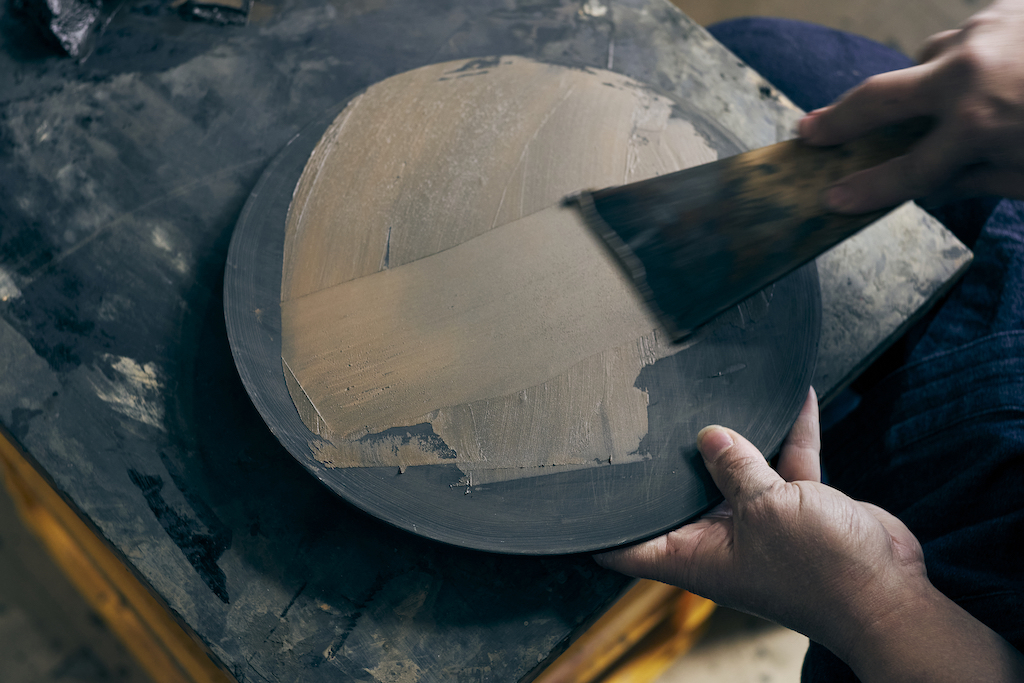
Somewhat embarrassed, he says that until this time he had never really handled his work without gloves and touching them with his hands and lips was a revelation. He was blown away by how much it improved both the experience and even the taste of food and drink. For the first time, he truly understood the value of lacquerware as not only something to look at in a temple, but as something to be used in everyday life.
Pandemic project
With demand for butsudan in decline, Takayama saw moving into lacquerware as an opportunity that might not only diversify the family business, but also preserve one of the world’s oldest crafts. The Covid pandemic was just beginning and, while the company’s regular work was drying up, it freed Takayama to devote himself to the study and practice of working on lacquerware.
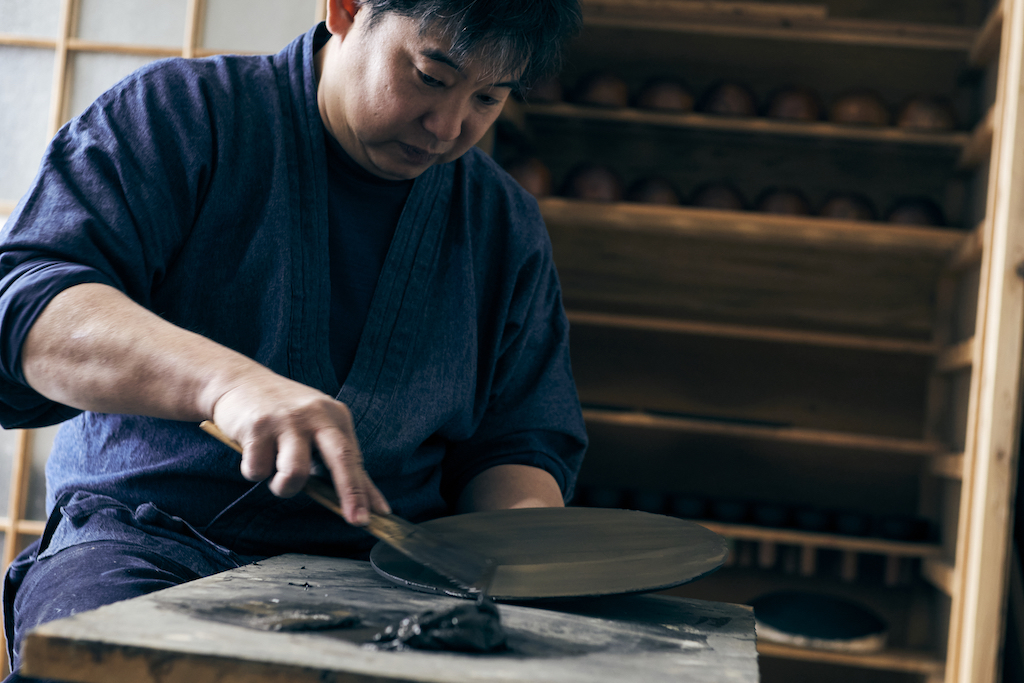
Despite the skills honed over years working with lacquer in temples transferred well, his early submissions to traditional art and crafts competitions were not well received. Realizing that, unlike working as a craftsman for hire, being recognized as an artist required him to find his own personal style, he embarked on a period of deep research traveling as far as Covid restrictions would allow him to museums and galleries to view the best examples of traditional arts and crafts in western Japan.
The hills of Kyoto meet the waters of Hiroshima Bay
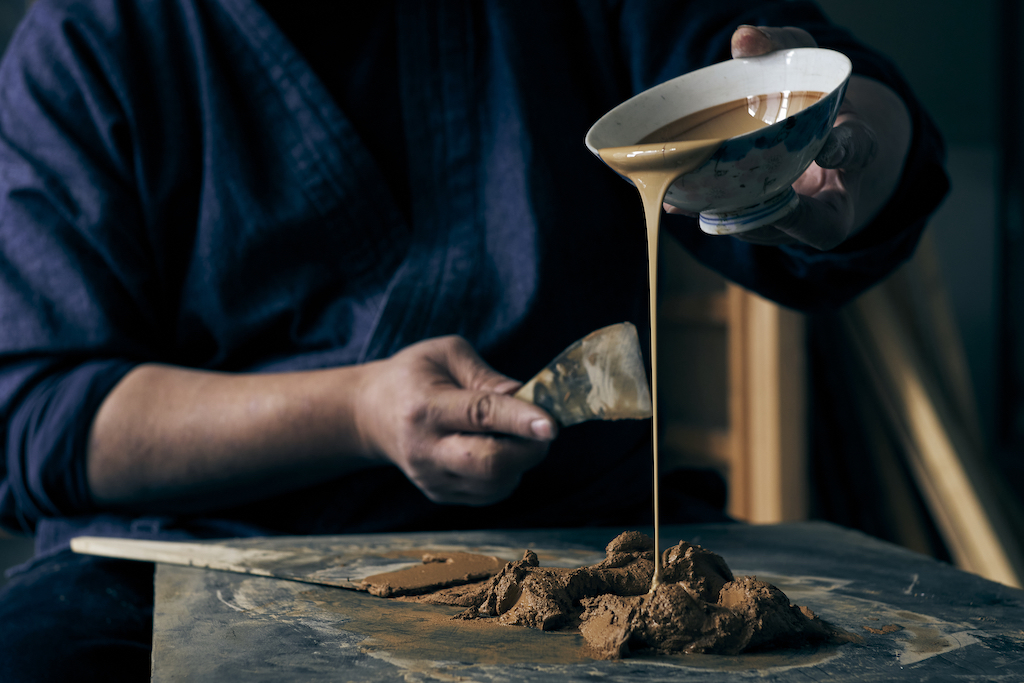
One way to stand out from the crowd was to add a local twist to the form while paying homage to Kyoto where he had learned his craft. Inspiration came from the waters of Hiroshima Bay. Hiroshima butsudan makers had long added powder made from the shells of oysters, still locally farmed in abundance today, to the all-important shitaji layer that acts as a primer on which lacquer is layered. Takayama hit on the idea of combining oyster shell powder with Kyoto’s ingredient of choice, dirt sourced from the mountains of Yamashina.
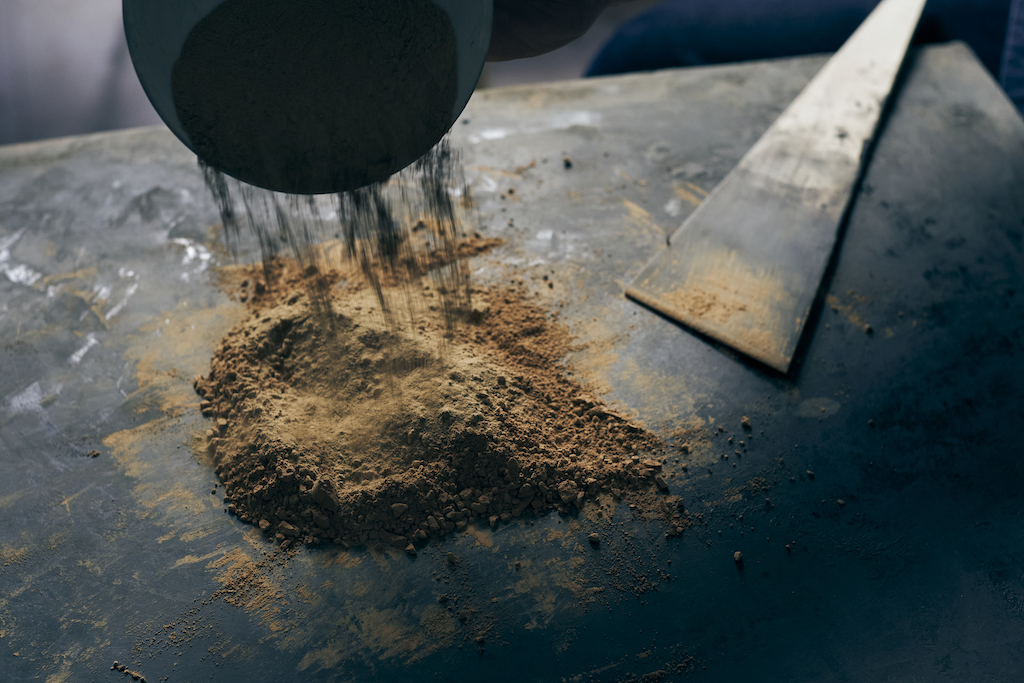
To Takayama, the incorporation of local oyster powder, not only made an excellent primer, but a story that expressed his mission; To pay homage, as a native of Hiroshima, to the history of local craftsmanship. This craftsmanship depended on natural resources that were transported by river from the mountains to the castle town; the same rivers which supply its oyster fields with the nutrients they need to grow. The concept struck a chord, and, only a year after his initial foray into the world of lacquerware, Takayama’s pieces started to gain recognition in competition and would, in 2022, be designated as a “Hiroshima Brand” product.
Taking delight in everyday luxury
Takayama’s gallery is filled with the most beautiful pieces of lacquerware. They range from his signature ranges of pieces that, although expertly crafted, are meant for everyday use, to larger artistic pieces meant for display. As well as more traditional style finishes, Takayama also employs a range of cheerful colors that appeal to a younger market than lacquerware has generally interested.
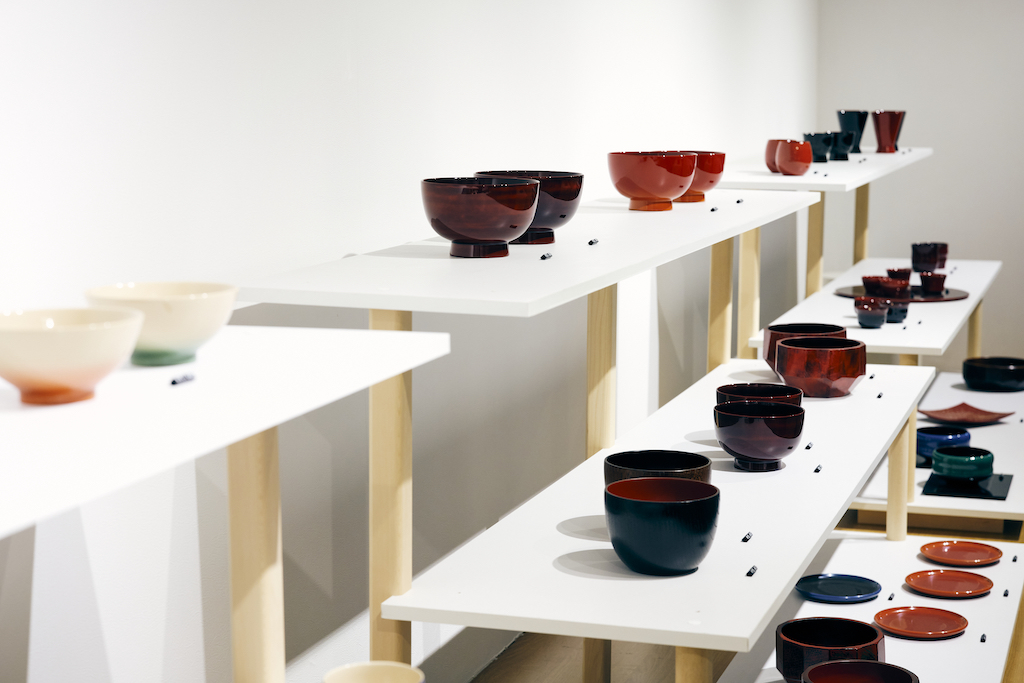
I picked up one of his dry-lacquer pieces, made not of wood, but created by layering lacquer over fine hemp cloth. It is light as a feather and it feels like you are holding something magically created out of thin air. His limited edition Den/Shiosai sake set, which takes a year to craft, employs this method to great effect. Consisting of a sake pourer shaped like a dove, island-inspired sake cups, and a tray that evokes an image of the Seto Inland Sea, Den/Shiosai was the perfect gift for the mayor of Hiroshima to present to the G7 leaders.
As you might expect, Takayama’s pieces are not cheap. However, once you feel the touch of these incredible works of art and appreciate the skill, care, and time that goes into creating them, you soon start to appreciate their value. Takayama hopes that more people will discover, just as he did five years ago, the moments of joy that can be found in the use of well crafted objects in their everyday lives.

Watching Takayama, ably-assisted by his wife, diligently working in the small studio above his gallery to meet a steady stream of orders, it seems that people are indeed interested in adding a little luxury to their lives. Takayama’s lacquerware may well turn out to be the key to the next 100 years of the family business.
Naoya Takayama
January, 2024
Photos: Shota Matono
Visit Naoya Takayama’s gallery in central Hiroshima


